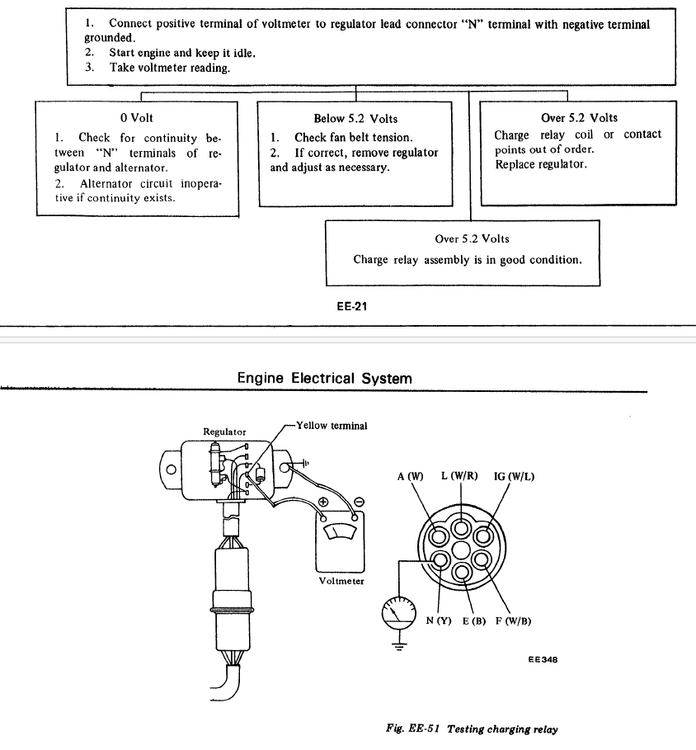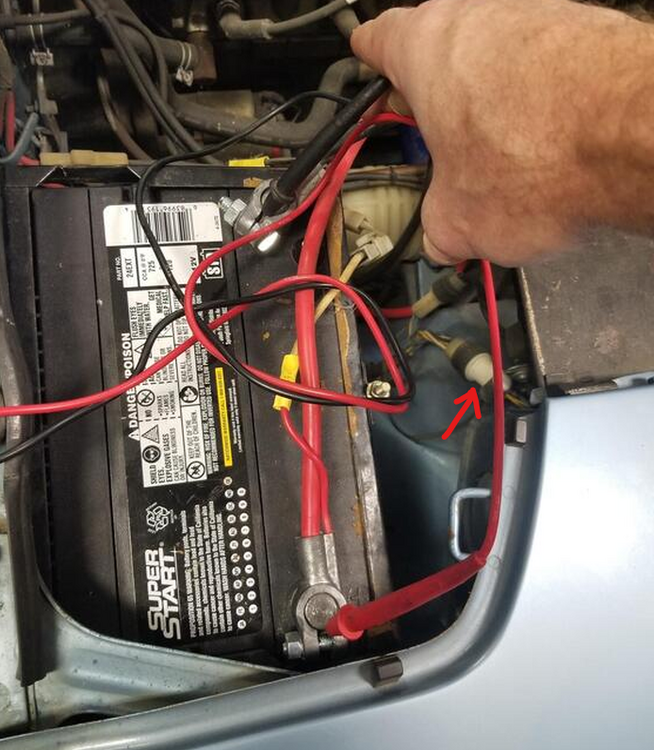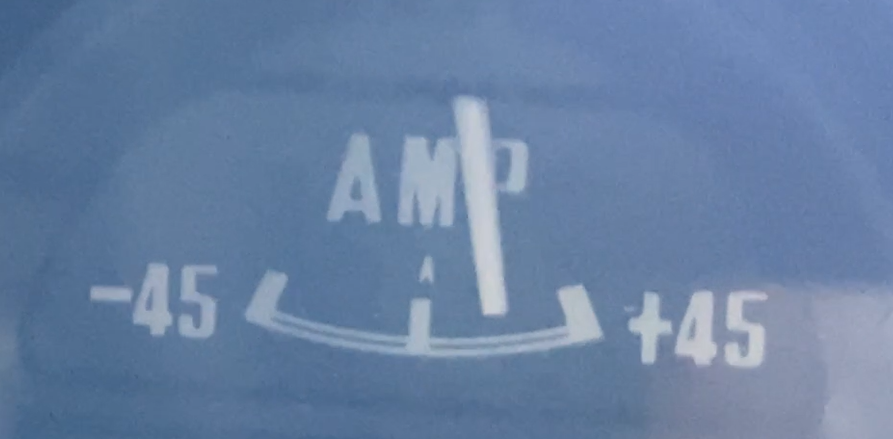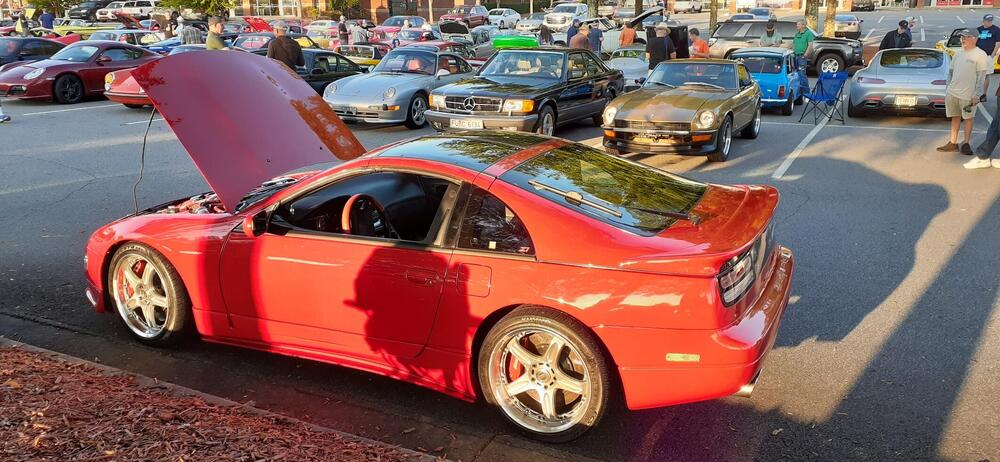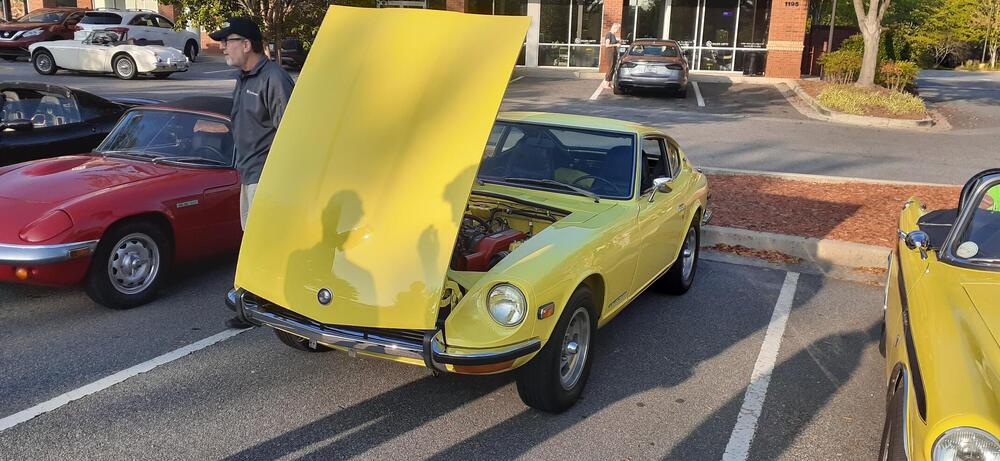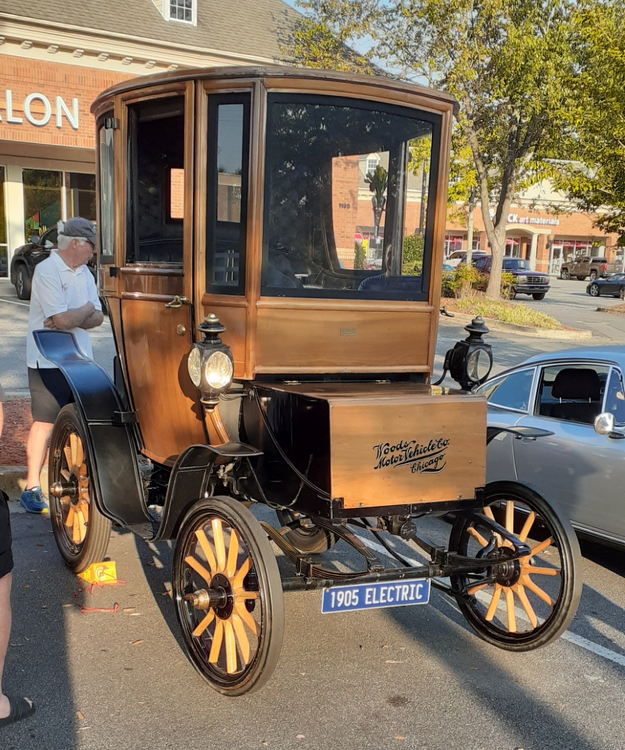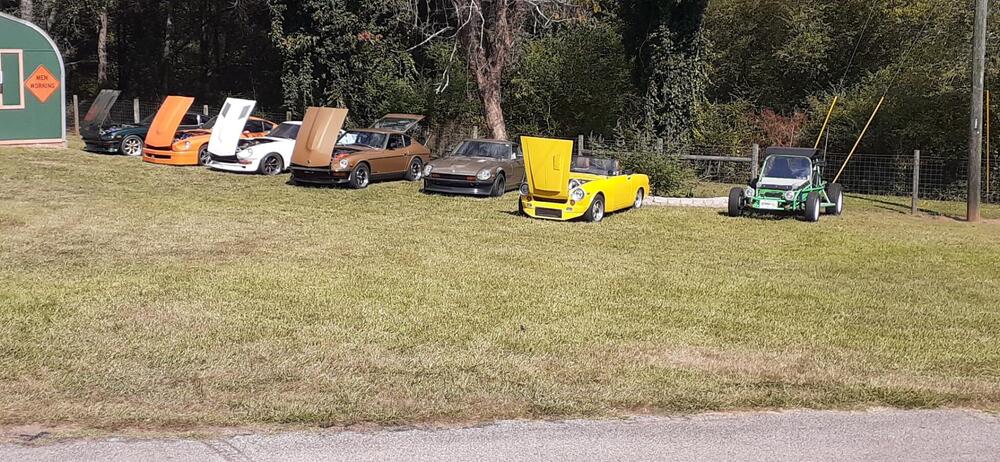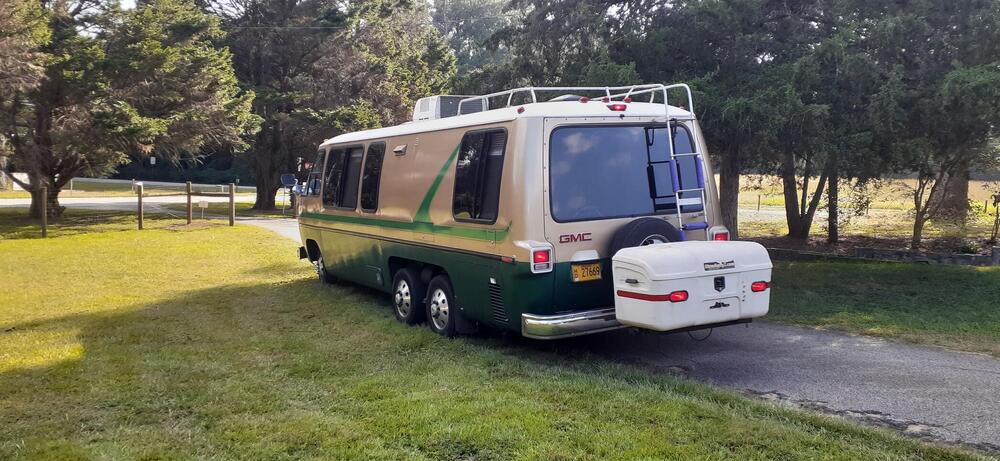Everything posted by SteveJ
-
240Z Fuel Pump Replacement
That's exactly why I was looking at the compressor and mounting bracket from Nostalgic AC. It mounts on the other side of the block.
-
240Z Fuel Pump Replacement
Keep in mind that I didn't say I was able to do it successfully. When I encountered that, the owner's son worked at a Kia dealership, and he had one of the mechanics in the service department tear out the non-functioning AC system. It might be that the system will need to be drained of refrigerant if it's still functional, get the hoses off the compressor, and replace everything after you fix the fuel pump.
-
240Z Fuel Pump Replacement
You'll have to work the compressor loose and pray there is enough flex in the AC lines.
-
"The Brown Z" HLS30-11080
You'll have to hold his beer.
-
"The Brown Z" HLS30-11080
You gotta love the double-fisted engine starting fluid technique.
-
Engine rough running - at wits end
- Engine rough running - at wits end
If it's a Nissan regulator it is adjustable. If it's aftermarket, who knows?- Engine rough running - at wits end
Just keep in mind, @the_tool_man, if you go with the Frontier alternator, choose from the offerings under New.- Engine rough running - at wits end
I would advise against it. If the voltage spikes more, you could take out your ECU.- Engine rough running - at wits end
Your car has a voltage regulator. I can see the plug. Frankly I don't trust reman alternators anymore. I have been advising people with bad alternators or regulators to do the Nissan Frontier swap. RockAuto lists "new" alternators for the 2000 Frontier 4 cylinder. You have to buy the plug for the sense and switched circuits. That is readily available on Amazon. I also went the extra step to buy the 6 pin Yazaki YPC male plug to make the jumper to remove the voltage regulator. I haven't had someone come back to me about the RA alternators I suggest failing.- Engine rough running - at wits end
High voltage is usually one of two things. The voltage regulator is failing. The battery sense voltage isn't present. Basically, pull off the connector for the voltage regulator. Measure voltage to ground on the white/red wire on the engine harness side of the connector. It should be battery voltage. That wire comes off the black fusible link, so likely it is the voltage regulator.- Restoration of BringaTrailer 240z - HLS30-35883
Brake fluid resistant o rings: https://satoriseal.com/epdm-o-rings/ Possible source: https://www.globaloring.com/product-category/o-rings-standard-sizes/epdm-o-rings-70-duro/ Also Grainger: https://www.grainger.com/category/hardware/o-rings-and-o-ring-kits/o-rings?attrs=O-Ring+Material|EPDM&filters=attrs&gucid=N:N:PS:Paid:GGL:CSM-2296:9JMEDM:20500731&gclid=Cj0KCQjwmvSoBhDOARIsAK6aV7hsgn4gz-ujED1fAZtebKNIUrXo8v9nFtvHkkFkzsinR_BlCy2wcGcaArBbEALw_wcB&gclsrc=aw.ds ebay: https://www.ebay.com/itm/191606666667?chn=ps&mkevt=1&mkcid=28&srsltid=AfmBOor_yVAmh3TJG4uEj6AhV9ox_DipN4S0kR0MRQJokpwBeTghkeCWF7A&com_cvv=d30042528f072ba8a22b19c81250437cd47a2f30330f0ed03551c4efdaf3409e Finally McMaster-Carr: https://www.mcmaster.com/products/o-rings/- 1975 280Z Cold Start Circuit Issues
I'm glad you found your answer. I looked a little online and through a couple of service manuals yesterday. I had some understanding of how it was supposed to work, but I think the drawing you just posted explains it better than I could have. Most of the drawings I found didn't show the heater strip clearly like that one does.- Starter failing, battery meter pegged?
Actually 12.8 is an acceptable voltage.- Starter failing, battery meter pegged?
The discussion of the fuel pump probably deserves its own thread, but I'll go ahead and give my 2¢. Measure the pressure in the fuel rail before you do anything else. It should not be more than 4 PSI. If you removed the mechanical pump, then you can measure pressure at the entrance of the fuel rail. Otherwise measure the pressure between the rail and one of the carburetors. There is no fuel pressure regulator. There is only an decreased orifice at the exit of the fuel rail. If your pump outputs more than about 7 PSI, you will have too much pressure in the fuel rail. (Note: Most of the PSI ratings for the small fuel pumps are exaggerated.) If you are buying a new pump, then electric is probably the way to go. I have seen too much online (and heard from amongst Z friends) about new mechanical pumps not performing. If you are determined to replace your electric fuel pump, consider a model like a Carter P4070 (https://www.amazon.com/Carter-P4070-Line-Electric-Fuel/dp/B000CIQ5DG). Keep in mind that any replacement fuel pump will require some routing of fuel lines. I also suggest considering a couple of lengths of Sidewinder fuel hose in the right diameter (https://www.amazon.com/16-Universal-Molded-Fuel-Line/dp/B07G2ZWGRG). This helps prevent kinking hoses. I used some on a friend's car, and it looked like it really belonged in the car. I like having an inertia switch in the fuel pump circuit, too. It can be one salvaged from a wrecked car or a new generic one from Amazon. They can cut the fuel in an accident even if the driver is incapacitated.- Starter failing, battery meter pegged?
That certainly explains the ammeter reading. The reading in your latest photo seems to show the fuel pump draw if the battery was fully charged given how you say everything is wired. What is the voltage reading with the battery topped off and car running?- Source For Replacement Bulb Sockets / Holders for instrumentation ?
Good thinking. I tried finding a grommet, but all my grommets were too thick. I used a small slice of 1/2 inch heat shrink, and that held the bulb socket in place better.- Starter failing, battery meter pegged?
Yeah, run a test with you holding the positive meter lead firmly on the battery post while the car is running and warmed up. If the voltage is below 13.5, reach across and operate the throttle slowly while looking at the meter. See if the voltage will hover more in the 14 volt range. Please trace out that red wire. I'm wondering whether someone "fixed" the wiring in the past or just added things.- Source For Replacement Bulb Sockets / Holders for instrumentation ?
I ordered a set, too. It takes a little pressure to push them through the hole, but it's not very snug. On the other hand, I think they may stay in place better than some other wedge socket swaps I have done in the past.- Starter failing, battery meter pegged?
A loose connection could have caused issues. How and where were the meter leads connected to the electrical system in your video. The meter certainly was jumping around. You may want to test without video to see what the voltage is. I did see it popping up to a little over 14, so if it is staying in that range, that should be good. I'm wondering if the ammeter is off or if you really are pumping out as much current as it's reading. It's not a precision gauge, but that looked to be around 20A, maybe more. I would expect to see that if there are a lot of loads on the battery side of the ammeter (I'm still curious about that red wire.), or a battery that is going south or had been greatly discharged. You may want to put the battery on a charger for a few hours and pull the fuse on the red wire. Then see if the ammeter is still reading like that.- [2023] What Did You Do To/with Your Z Today?
@SteveJ It's like going into Wisconsin. @Captain Obvious Well I got the $#!+ kicked out of me in Wisconsin once. Forget it!- [2023] What Did You Do To/with Your Z Today?
Third day in a row taking the car out. Only 4 Zs showed up, including mine. That could be from ZNationals happening yesterday. Then there was this unique vehicle. I'm not used to taking car photos in portrait mode.- Resurrected Classics Coolant Hose set OEM Style braided
I was over there a while back, but I don't recall if I looked at them. @Yarb did you?- Source For Replacement Bulb Sockets / Holders for instrumentation ?
I have used wedge (194) sockets to replace bulb sockets in my 260Z. These aren't the ones I used, but I think they may do a good job of staying where you need them: https://www.amazon.com/uxcell-Wedge-Light-Instrument-Socket/dp/B00W8W5MR4- [2023] What Did You Do To/with Your Z Today?
Today I was celebrating the birthday of a brother from a different mother. He also happens to be a Z enthusiast. Every car in that photo except for my 260Z and the 280Z between my car and the Roadster is his. Plus he still has the 240Z he bought from Redwing (Jai) in his garage waiting to be reassembled. Since it was his birthday, I got the horns and speedometer working in his Roadster. He swapped a 240Z for the Roadster. The Roadster has a 2.4L turbo engine in it. Unfortunately, the wiring looks like it was done by a body guy, and the body looks like it was done by an electrical guy. I've been helping him sort out electrical gremlins and install better connectors. He's done a lot of work on my 260Z in the past, so I'm just returning in-kind. A few other Zs showed up along with a 240SX and a G60. There was even a 65 Mustang 2+2 and a 1st gen Camaro SS on hand. There was one strange guy there who was saying something about needing to go to Czechoslovakia to rescue his platoon as he left. - Engine rough running - at wits end
Important Information
By using this site, you agree to our Privacy Policy and Guidelines. We have placed cookies on your device to help make this website better. You can adjust your cookie settings, otherwise we'll assume you're okay to continue.








